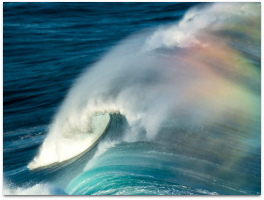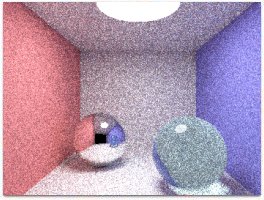Advanced Graphics
Universiteit Utrecht - Information and Computing Sciences
academic year 2022/23 – 2nd block
 |
 |
 |
Advanced GraphicsUniversiteit Utrecht - Information and Computing Sciencesacademic year 2022/23 – 2nd block |
|||
|
Navigation |
||||||||
|
|
||||||||
News
|
|
Recent news
Jan
13:
Jan
13:
Jan
13:
Jan
13:
Older posts are still available here. |
Format and Organization
|
|
Overview The master course Advanced Graphics addresses
advanced topics in 3D computer graphics. The focus of
the course is Physically-based rendering of 3D
scenes. The course has two main focus areas: Rendering
Algorithms and Making Rendering More
Efficient. Efficiency will be sought through Acceleration Structure
Construction and Traversal
and Variance
Reduction (rather than low level
optimization). The course starts with a recap of Whitted-style ray tracing. We then explore various acceleration structures that help to run the ray tracing algorithm in real-time on commodity hardware. We will see that a well-built Bounding Volume Hierarchy provides both flexibility and speed, for static and dynamic scenes. The second part of the course introduces the path
tracing algorithm, and related light transport theory.
We investigate various methods to improve the efficiency
of the algorithm using probability theory. We will see
that efficient path tracing can yield interactive frame
rates. In the third part of the course we use GPGPU to run ray tracing and path tracing on the GPU. We will explore recent research in high performance stochastic rendering.
You will have practical experience in the following
topics:
You will have a reasonable grasp of several related
topics:
Lecturer: Jacco Bikker (j.bikker@uu.nl)
Lectures will be recorded for those that cannot be
physically on campus, and for later reference. Practicals Final Exam
|
Topics |
|
|
|
Schedule
|
||||||||||||||||||||||||||||||||||||||||||||||||||||||||||||||||||||||||||||||||||||||||||||||||||||||||||||||||||||||||||
|
BLOCK 2 Schedule
|
||||||||||||||||||||||||||||||||||||||||||||||||||||||||||||||||||||||||||||||||||||||||||||||||||||||||||||||||||||||||||
Downloads
|
|
LECTURE SLIDES and RECORDINGS
Please find ecordings for the course in Teams. SUPPLEMENTAL MATERIAL
VoxelWorld template is also available on GitHub. |
|
|
|
Literature & Links
|
|
LITERATURE
Recommended literature PAPERS & ONLINE MATERIALS |
News Archive
|
|
Old posts Jan
10:
Jan
9:
Dec
19:
Dec
12:
Dec
7:
Dec
5:
Nov
29:
Nov
28:
Nov
23:
Nov
21:
Nov
17:
Nov
15:
Nov
7:
|